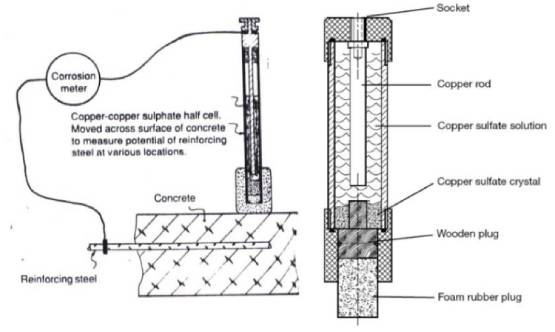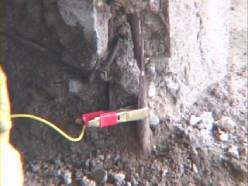




An Equi-potential contour map can be plotted to get an overall picture of the member

The risk of corrosion is evaluated by means of the potential gradient obtained, the higher the gradient , the higher risk of corrosion. The test results can be interpreted based on the following table
| Half – cell potential ( mv) relative to Cu-Cu sulphate Ref. electrode | Probability of Corrosion | |
|---|---|---|
| Less Negative than – 200 | 90 % No Corrosion | |
| Between – 200 to – 350 | 50 % ( uncertain ) | |
| More Negative than 350 | >90 % Possibility of Corrosion activity | |
| More negative than 500 | Severe Corrosion | |
Significance and use
- This method may by used to indicate the corrosion activity associated with steel embedded in concrete.
- This method can be applied to members regardless of their size or the depth of concrete cover.
- This method can be used at the any time during the life of concrete member.
Influence of Test Conditions
- Dense cover concrete and higher cover depth will shift the half-cell readings towards more negative
- Carbonation of concrete will shift the half-cell readings towards more negative
- Higher temperature will shift the half-cell readings towards more negative
- Increase in chloride ion concentration will shift the half-cell readings towards more negative
- Use of Anodic Corrosion Inhibitors will shift the half-cell readings towards more positive
Reliability & Limitations
The test does not actual corrosion rate or whether corrosion activity has already started, but it indicates the probability of the corrosion activity depending upon the actual surrounding conditions. If this method used in combination with resistivity measurement , the accuracy is higher. If the concrete surface has dried to the extent that it is dielectric , then pre wetting of concrete is essential.
